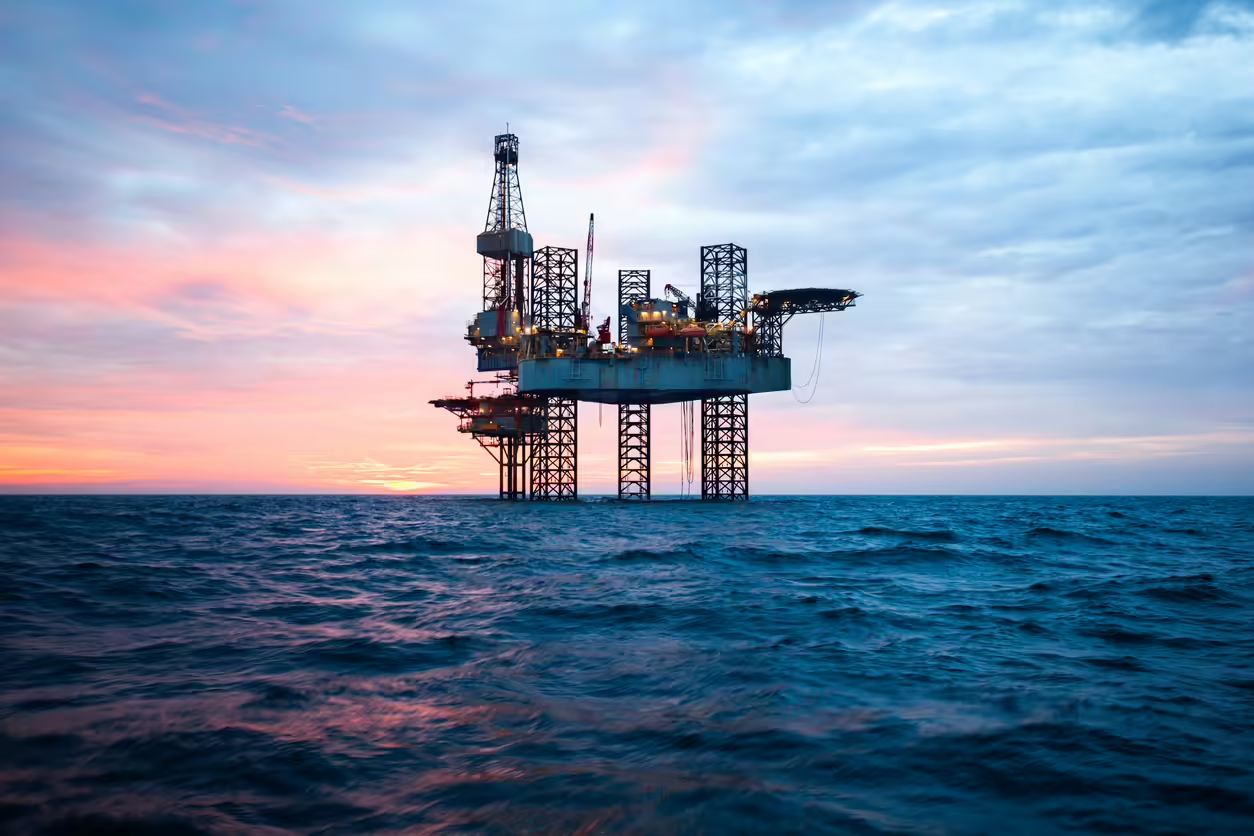
Recently, the amount of oil and gas collected in mainland Texas has been on the decline, leading to more exploration and drilling in the seabed. Large numbers of offshore oil rigs facilitate this drilling, each of which is suited for different conditions.
The basic idea of an offshore rig is simple: you need a platform to drill for oil in the ocean. However, the ocean isn’t the same everywhere — it can be shallow or deep, calm or stormy. Furthermore, the seafloor can be sandy or rocky, and regulations vary by country.
For this reason, oil companies have come up with different rig designs to handle different situations. The choice of rig depends on the location, general weather conditions, the type of drilling operation, and key safety considerations.
Types of Offshore Rigs
With anywhere from 300 to 400 rigs in operation at any given time, Texas has the highest number of oil rigs in the U.S. Most are found in the Permian basin, while the Eagle Ford basin is home to some 51 rigs. There are also many offshore rigs operating in the area. Some of the types of rigs in or near Houston include:
Jack-Up Rigs
A jack-up rig is a mobile drilling platform with three or four legs (stilts) that can be anchored to the ocean floor. Jack-up rigs are self-elevated, which makes them useful for drilling wells in shallow waters of 400 feet or less.
There are several types of jack-up rigs:
- Cantilever
- Caisson-supported
- Mat-supported
- Independent leg
- Slot
Each style of jack-up rig has unique features that make it more adaptable in different drilling circumstances. Jack-up rigs face safety risks like blowouts, while severe weather conditions can pose potential operational challenges.
Drillships
Drillships are vessels that combine the capabilities of a ship and a drilling rig. Their mobility and drilling capabilities make them ideal for offshore drilling in remote and hard-to-access places with deep waters.
Drillships are used for exploratory drilling, in which they conduct drill tests to assess the nature and quantity of hydrocarbons in subsea deposits. Corporations in the oil and gas industry favor drillships because they’re easily deployable to new drilling locations. They’re also good for drilling in areas with rapidly depleting reservoirs.
Since drillships mainly operate in the deep sea, fluctuating temperatures and high pressure pose a major challenge. Drillships have reliable safety features like blowout preventers; however, accidents like blowouts, fires, and explosions can still happen, endangering the personnel onboard.
Semi-Submersible Rigs
As their name suggests, semi-submersible rigs have a floating work deck, with the rest of the rig in the water to help with stability. They’re used in exploration and drilling in deep waters (roughly 3,000–10,000 feet). The floating design is useful because it’s not feasible to have rigs at the bottom of the ocean.
Personnel operating semi-submersible rigs face the risk of oilfield accidents such as blowouts and explosions.
Compliant Towers
A compliant tower is a fixed rig structure featuring narrow, flexible towers and a piled foundation that supports the deck during operation. These rigs operate in waters that are around 3,000 feet deep. Operating a compliant tower can come with dangers like explosions or difficulty controlling the drilling process.
Fixed Platforms
Fixed platforms are rigs that are anchored to the ocean floor. They’re intended for long-term use in shallow water. Unlike drillships and other rigs used in the deep sea, fixed platforms don’t face challenges like extreme temperatures and pressure. However, since they handle large amounts of hydrocarbon gasses, they are vulnerable to fires and explosions.
Offshore Oil Rigs Offer Both Risk and Reward
The choice of an oil rig for a drilling operation affects everything from cost to safety to environmental impact. Each type comes with a different set of engineering tradeoffs and a different approach to the challenge of extracting oil from beneath the sea. As oil companies push into deeper and deeper waters, there will be a need to keep developing new rig designs.
Contact the Undefeated Houston Oil Rig Accident Lawyers from Zehl & Associates Injury & Accident Lawyers for Help Today
For more information, please contact our Undefeated oil rig attorneys in Texas at Zehl & Associates Injury & Accident Lawyers to schedule a free consultation today.
We proudly serve Harris County, Midland County, and throughout the state of Texas:
Zehl & Associates Injury & Accident Lawyers – Houston
2700 Post Oak Blvd #1000, Houston, TX 77056
(888) 603-3636
29.73890263937774, -95.4612824423294
Open 24 hours

Zehl & Associates Injury & Accident Lawyers – Midland
306 W Wall St Suite 701, Midland, TX 79701
(432) 220-0000
31.99827039117601, -102.07752974593966
Open 24 hours